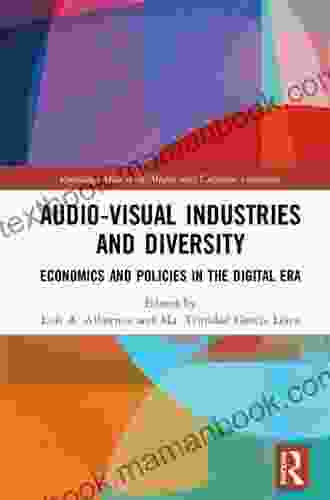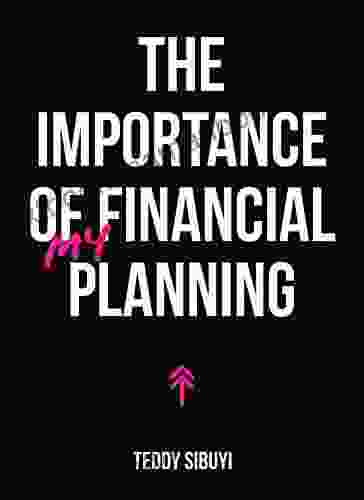Unveiling the Lack of Diversity in the Audio Visual Industries: A Comprehensive Analysis and Call to Action

4.5 out of 5
| Language | : | English |
| File size | : | 1055 KB |
| Text-to-Speech | : | Enabled |
| Screen Reader | : | Supported |
| Enhanced typesetting | : | Enabled |
| Word Wise | : | Enabled |
| Print length | : | 239 pages |
The audio visual industries, encompassing film, television, and music, have a profound impact on our culture and society. They shape our perceptions, inform our understanding of the world, and provide crucial entertainment and escapism. However, despite their immense reach and influence, these industries have long been plagued by a glaring lack of diversity.
Diversity, in this context, encompasses a wide range of characteristics, including race, ethnicity, gender, sexual orientation, disability, age, socioeconomic background, and more. Its importance in the audio visual industries cannot be overstated. A diverse workforce and creative pool leads to more nuanced, representative, and engaging content that resonates with a broader audience. It fosters innovation, challenges stereotypes, and promotes cultural understanding.
Yet, the reality in the audio visual industries paints a different picture. Representation of diverse groups in front of and behind the camera remains woefully inadequate, with certain marginalized communities grossly underrepresented or misrepresented. This lack of diversity not only undermines the quality and authenticity of content but also perpetuates harmful stereotypes and contributes to social inequality.
The Data: A Statistical Snapshot
Numerous studies have documented the systemic lack of diversity in the audio visual industries. According to a 2021 report by the USC Annenberg Inclusion Initiative, women made up only 26.5% of speaking roles in the top 100 grossing films of 2020, while people of color accounted for just 27.6%. In television, a 2019 report by the GLAAD Media Institute found that only 10.2% of regular characters on scripted broadcast primetime shows were LGBTQ+, while characters with disabilities made up only 2.1%.
Behind the camera, the disparity is even more pronounced. A 2022 study by the McKinsey & Company revealed that women comprised only 22% of all directors of feature films released in 2021, and only 17% of showrunners on primetime television. Representation of people of color in leadership positions is similarly low, with a mere 13% of directors and 15% of showrunners being from underrepresented racial and ethnic groups.
These statistics paint a clear picture of an industry that is dominated by a narrow demographic, leaving countless voices unheard and perspectives unrepresented.
The Impact: Consequences of Underrepresentation
The lack of diversity in the audio visual industries has a profound impact on the content we consume and the society we live in.
Misrepresentation and Stereotyping
When marginalized groups are underrepresented or misrepresented in media, it can lead to harmful stereotypes and perpetuate negative biases. For example, the overrepresentation of women as housewives or men of color as criminals can reinforce harmful societal norms and limit the potential for authentic and nuanced portrayals.
Lack of Authenticity and Relevance
A lack of diversity in the audio visual industries also impacts the authenticity and relevance of content. Stories told from a narrow perspective often fail to resonate with diverse audiences, resulting in content that lacks depth and fails to engage a broader spectrum of viewers.
Missed Opportunities for Innovation
A diverse workforce and creative pool fosters innovation by bringing a wider range of experiences, perspectives, and ideas to the table. When marginalized voices are excluded, industries miss out on valuable insights and potential breakthroughs that could enhance narratives and improve storytelling.
Perpetuation of Social Inequality
The systemic lack of diversity in the audio visual industries contributes to social inequality by perpetuating the marginalization of certain groups. When people from underrepresented backgrounds lack opportunities in these influential industries, it reinforces the notion that their stories and experiences are not valued or relevant.
The Call to Action: A Path to Greater Inclusivity
Addressing the lack of diversity in the audio visual industries requires a concerted effort from all stakeholders, including industry leaders, filmmakers, creatives, and audiences.
Increasing Representation
The first step towards greater inclusivity is to increase representation both in front of and behind the camera. This can involve actively seeking out and supporting diverse talent, implementing inclusive hiring practices, and creating opportunities for marginalized groups to share their stories and develop their skills.
Challenging Stereotypes
Another crucial step is to challenge harmful stereotypes and promote more authentic and inclusive narratives. This requires storytellers to consciously break away from traditional molds and depict characters with nuance and complexity, avoiding tropes and clichés that perpetuate negative stereotypes.
Investing in Diversity Initiatives
Industry leaders and organizations should invest in diversity initiatives that support and empower marginalized communities. This can include mentorship programs, training opportunities, and funding for projects that promote diversity and inclusion.
Audience Engagement
Audiences also play a vital role in driving change. By supporting diverse content, attending film screenings, and engaging with media literacy initiatives, audiences can demonstrate their demand for more inclusive and representative stories.
: Towards a More Inclusive Future
The lack of diversity in the audio visual industries is a systemic issue that has profound consequences for the content we consume and the society we live in. By increasing representation, challenging stereotypes, investing in diversity initiatives, and engaging audiences, we can create a more inclusive and equitable industry that reflects the richness and diversity of our world.
A more diverse audio visual industry is not simply a matter of political correctness or social justice. It is about creating content that is more authentic, engaging, and reflective of the human experience. It is about fostering innovation, breaking down barriers, and building a society where all voices are heard and all stories are valued.
As the famous quote by Toni Morrison goes, "The function, the very serious function of racism is distraction. It keeps you from ng your work. It keeps you explaining, over and over again, your reason for being." By dismantling the systemic lack of diversity in the audio visual industries, we can free ourselves from the distraction of racism and other forms of oppression, and focus our attention on creating a more just and equitable world through the power of storytelling.
4.5 out of 5
| Language | : | English |
| File size | : | 1055 KB |
| Text-to-Speech | : | Enabled |
| Screen Reader | : | Supported |
| Enhanced typesetting | : | Enabled |
| Word Wise | : | Enabled |
| Print length | : | 239 pages |
Do you want to contribute by writing guest posts on this blog?
Please contact us and send us a resume of previous articles that you have written.
 Top Book
Top Book Novel
Novel Fiction
Fiction Nonfiction
Nonfiction Literature
Literature Paperback
Paperback Hardcover
Hardcover E-book
E-book Audiobook
Audiobook Bestseller
Bestseller Classic
Classic Mystery
Mystery Thriller
Thriller Romance
Romance Fantasy
Fantasy Science Fiction
Science Fiction Biography
Biography Memoir
Memoir Autobiography
Autobiography Poetry
Poetry Drama
Drama Historical Fiction
Historical Fiction Self-help
Self-help Young Adult
Young Adult Childrens Books
Childrens Books Graphic Novel
Graphic Novel Anthology
Anthology Series
Series Encyclopedia
Encyclopedia Reference
Reference Guidebook
Guidebook Textbook
Textbook Workbook
Workbook Journal
Journal Diary
Diary Manuscript
Manuscript Folio
Folio Pulp Fiction
Pulp Fiction Short Stories
Short Stories Fairy Tales
Fairy Tales Fables
Fables Mythology
Mythology Philosophy
Philosophy Religion
Religion Spirituality
Spirituality Essays
Essays Critique
Critique Commentary
Commentary Glossary
Glossary Bibliography
Bibliography Index
Index Table of Contents
Table of Contents Preface
Preface Introduction
Introduction Foreword
Foreword Afterword
Afterword Appendices
Appendices Annotations
Annotations Footnotes
Footnotes Epilogue
Epilogue Prologue
Prologue Vivechkanand S Chunoo
Vivechkanand S Chunoo Mike Rembis
Mike Rembis Stephen Parkes
Stephen Parkes Sarah Silverman
Sarah Silverman Alfred W Tatum
Alfred W Tatum Claudio Valerio Gaetani
Claudio Valerio Gaetani Todd J Mccaffrey
Todd J Mccaffrey Joanne Samuel Goldblum
Joanne Samuel Goldblum Steve Rat Albert
Steve Rat Albert Nuzha Moritz
Nuzha Moritz Anne Carson
Anne Carson Richard Henry
Richard Henry Editors Of Garden And Gun
Editors Of Garden And Gun Charles J Schwahn
Charles J Schwahn Maria Fleming
Maria Fleming Philippa Perry
Philippa Perry Sean Hill
Sean Hill Daniel Macdonald
Daniel Macdonald Elaine L Wilmore
Elaine L Wilmore John W Dean
John W Dean
Light bulbAdvertise smarter! Our strategic ad space ensures maximum exposure. Reserve your spot today!

 Darnell MitchellAct, Play, Sing: The Art of Live Performance and Video Streaming with Chorus
Darnell MitchellAct, Play, Sing: The Art of Live Performance and Video Streaming with Chorus Robert BrowningFollow ·17.8k
Robert BrowningFollow ·17.8k Cristian CoxFollow ·14.1k
Cristian CoxFollow ·14.1k Junot DíazFollow ·17.1k
Junot DíazFollow ·17.1k Darren NelsonFollow ·9k
Darren NelsonFollow ·9k Jake CarterFollow ·13.8k
Jake CarterFollow ·13.8k Fernando PessoaFollow ·18.3k
Fernando PessoaFollow ·18.3k Charles ReedFollow ·7.2k
Charles ReedFollow ·7.2k Roger TurnerFollow ·5.8k
Roger TurnerFollow ·5.8k

 Forrest Reed
Forrest ReedHulusi Darende's Poems: Unraveling the Lyrical Tapestry...
: A Journey into the Heart of Sufi...

 Gabriel Blair
Gabriel BlairAct of Terror: A Jericho Quinn Thriller
In the heart-pounding...

 Zadie Smith
Zadie SmithScales for Strings Teacher Manual: A Comprehensive Guide...
Scales are fundamental building blocks of...

 Hugo Cox
Hugo CoxMermaid (NHB Modern Plays) Polly Teale
The Mermaid NHB Modern Plays series, a...
4.5 out of 5
| Language | : | English |
| File size | : | 1055 KB |
| Text-to-Speech | : | Enabled |
| Screen Reader | : | Supported |
| Enhanced typesetting | : | Enabled |
| Word Wise | : | Enabled |
| Print length | : | 239 pages |













